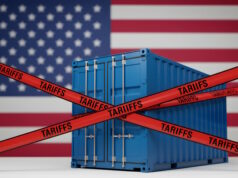
Consumers shopping in the new car market are finding that it’s a challenging time to buy, as high prices and financing conditions have pushed monthly payments to record levels.
Car buyers are financing purchases with larger loans and longer terms on those loans. That can mean being on the hook for auto payments for seven years or more.
As freshly redesigned (and more expensive) 2026 vehicle models make their way to dealership lots, new car prices could climb even higher, experts say.
The average list price for a new car in the first half of the year was $49,215, according to Cars.com. The only time average list prices have gone above the $50,000 level was during a four-month period in 2023. But David Greene, industry analyst at Cars.com, says he wouldn’t rule it out in the months ahead as automakers increase list prices and tariff costs get passed along to consumers.
“It’s absolutely possible that we push through $50,000 for the average vehicle price,” Greene says. “As we roll forward into a new model year, that’s when automakers tend to increase their pricing.”
Only two U.S.-built models under $30,000 remain
Experts say that new cars under $20,000 will soon be extinct from the U.S. market, and options under $30,000 are also becoming harder to find.
Currently, the Honda Civic and the Toyota Corolla are the only U.S.-assembled models left with list prices under $30,000, Greene says. Foreign-made vehicles dominate this dwindling entry-level price segment, which means tariffs could have an outsized impact for shoppers looking at these options.
“Most of the vehicles priced under $30,000 are imported, and those vehicles particularly tend to come from Mexico and South Korea,” Greene says. “Those countries are still being tariffed at the highest rate the auto business is seeing right now, which is 27.5%.”
Experts say that average car prices could rise as tariffs cost automakers billions. Automakers, including Ford, have announced price increases for models assembled in Mexico. Only about 14% of new vehicle inventory is priced under $30,000, Greene notes. In the first half of 2019, a pre-pandemic comparison point, 38% of new car inventory was priced under 30,000.
A record share of $1,000 car payments
Edmunds reports that the share of monthly car payments over $1,000 hit a record high of 19.3% in the second quarter of the year — up from 17.7% a year ago.
The average amount financed for a new car purchase in the quarter, $42,388, was also a record. These bigger car loans are becoming the “new normal,” according to Edmunds.
Buyers commit to longer loans
The lowest auto loan rates are typically offered on loans of 60 months or less. However, it’s not realistic for every budget when the average monthly payment for a new car is $756. Many of today’s car buyers are opting for much longer loans to make monthly payments affordable. In the second quarter, a record share of new car financing (22.4%) was for 84 months or more, according to Edmunds. That figure has spiked from 17.6% in the second quarter of last year.
“It’s clear that buyers are pulling the few levers they can control to manage affordability, whether that’s by taking on longer loans, financing more, or putting less money down — even if some of those decisions increase their total costs,” Ivan Drury, Edmunds’ director of insights, says in a report.
Average auto loan interest rates are still high
The Federal Reserve’s pause on interest rate cuts since December has left car shoppers stuck with high loan rates. In the first quarter, new car loan rates for prime borrowers (661 to 780 credit scores) averaged 6.7%, while “near prime” car buyers (601 to 660 credit scores) were seeing APRs of 9.8%, according to Experian data as of March.
Ultra-low financing offers are scarce. Edmunds reports that 0% finance deals are clocking in at a record low, representing just 0.9% of new-vehicle loans. To secure these loans, buyers usually need strong credit and the ability to handle a shorter term (e.g., 36 or 48 months).
EV sales are surging, but not for long
Electric vehicles are about to get more expensive, experts say. The government’s EV tax credit was defeated by the 2025 GOP tax reform law. This credit has provided tax incentives of up to $7,500 for EV buyers since 2023, after being expanded by the Inflation Reduction Act.
With the tax credit set to expire Sept. 30, EV sales are currently seeing a bump.
“EV sales in July were strong, initially estimated to be the second-best month ever, with sales over 130,000, a 20% year-over-year increase,” Kelley Blue Book said in an Aug. 11 report.
This appears to represent some extra last-minute demand for these models, which automakers have been eager to try to capitalize on with discounts.
When the credit expires, the price gap between EVs and gas cars will likely grow larger, as best-selling models that carry luxury price tags will lose their eligibility for $7,500 tax credits.
Disclaimer
The information contained in South Florida Reporter is for general information purposes only.
The South Florida Reporter assumes no responsibility for errors or omissions in the contents of the Service.
In no event shall the South Florida Reporter be liable for any special, direct, indirect, consequential, or incidental damages or any damages whatsoever, whether in an action of contract, negligence or other tort, arising out of or in connection with the use of the Service or the contents of the Service. The Company reserves the right to make additions, deletions, or modifications to the contents of the Service at any time without prior notice.
The Company does not warrant that the Service is free of viruses or other harmful components












